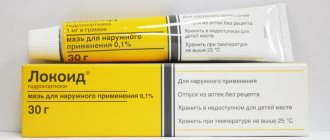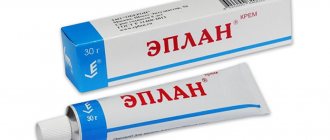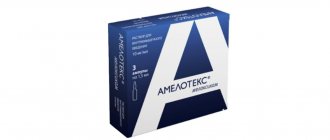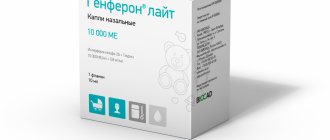"Calcemin Advance" is a relatively inexpensive drug for replenishing the deficiency of calcium, magnesium, manganese, boron and copper. Improves mood, sleep, helps restore bone and dental tissue, normalizes phosphorus metabolism. Intended for use by adults and children over 12 years of age. There are not many contraindications for the product, but it should not be taken by young children, as well as pregnant and lactating women.
Description, composition of the drug
The drug is available in the form of tablets that contain several active ingredients (quantities per 1 piece are indicated):
- calcium in the form of citrate and carbonate 500 mg;
- vitamin D3 200 IU;
- magnesium in pure form 40 mg;
- zinc in pure form 7.5 mg;
- copper in oxide form 1 mg;
- pure manganese 1.8 mg;
- pure boron 250 mcg.
The following additional components are used: stearic acid, maltodextrin, cellulose and others.
The drug is intended to strengthen bone and dental tissue. It promotes better absorption of calcium and normalization of phosphorus metabolism. The product is also used to replenish the deficiency of calcium, vitamin D3, boron, magnesium and other compounds. Due to the large number of active components, there is no information on pharmacokinetics and pharmacodynamics.
The product is produced in the form of tablets, which are packaged in 30, 60 or 120 pieces. Store the drug at room temperature in the range of 15-30 degrees, in the absence of direct sunlight. Access for children is prohibited.
Instructions for use CALCEMIN® ADVANCE
Phenytoin, barbiturates, carbamazepine, rifampicin:
may reduce the effect of vitamin D3 by increasing its metabolism to inactive metabolites.
Bisphosphonates, fluorides:
it is possible to reduce the absorption of bisphosphonates and sodium fluoride in the gastrointestinal tract. It is recommended to take at least 1-2 hours before or after taking Calcemin® Advance. It is preferable to use bisphosphonates and calcium supplements at different times of the day.
Tetracycline:
the absorption of tetracycline in the gastrointestinal tract may be reduced. It is recommended to take at least 2-3 hours before or 4-6 hours after taking Calcemin® Advance.
Cardiac glycosides, calcium channel blockers:
possible increase in the toxicity of cardiac glycosides (danger of lethal arrhythmia). Monitoring of ECG and blood calcium concentration is recommended. The effectiveness of calcium channel blockers, such as verapamil, in atrial fibrillation is reduced. Combined use is not recommended.
Levothyroxine:
Possible impairment of absorption of levothyroxine. It is recommended to take at least 2-4 hours before or 4-6 hours after taking this drug.
Quinolones, antivirals:
the absorption of antibacterial agents from the quinolone group (for example, ciprofloxacin, levofloxacin, norfloxacin, ofloxacin, nalidixic acid) and antiviral agents (protease inhibitors) may be impaired. It is recommended to take at least 2-4 hours before or 4-6 hours after taking this drug.
Thiazide diuretics:
Thiazide diuretics reduce urinary calcium excretion. Due to the increased risk of hypercalcemia with concomitant use of thiazide diuretics and calcium supplements, it is recommended to regularly monitor serum calcium levels during long-term treatment.
Glucocorticoids, hormonal contraceptives:
reduce calcium absorption, possibly reducing the effect of vitamin D3. A dose adjustment of Calcemin® Advance may be required.
Ion exchange resins such as cholestyramine, laxatives, orlistat:
simultaneous use with this drug may reduce the absorption of vitamin D3 in the gastrointestinal tract. It is recommended to take 2 hours before or 4-6 hours after taking vitamin D.
Iron, zinc, magnesium, strontium ranelate:
calcium may reduce the absorption of iron, magnesium, zinc and strontium ranelate. If joint use is necessary, it is recommended to maintain an interval of at least 2 hours before or 4-6 hours after taking calcium supplements.
Food:
Possible interaction with certain foods (eg, those containing oxalic acid, phosphates, phytic acids, or foods high in fiber). Due to the risk of decreased calcium absorption, it is recommended to maintain an interval of at least 2 hours between taking calcium supplements and these foods.
Contraindications and side effects
In some cases, taking the drug is excluded:
- excess calcium;
- hypercalciuria;
- children up to 11 years of age inclusive;
- hypersensitivity to individual components;
- urolithiasis.
Side effects are not observed so often, but in some cases they may occur in different organ systems:
- immune system - allergic reactions;
- digestive system: feeling of nausea, vomiting, heaviness in the abdomen;
- metabolic system: excess calcium, symptoms of hypercalciuria (including nausea and vomiting, muscle pain, abdominal pain, problems with appetite, increased thirst due to dehydration, frequent urge to urinate, decreased performance, increased fatigue, mood swings and others) .
If allergic reactions, pain and other described symptoms occur, taking vitamins should be stopped immediately. Resumption of the course is allowed after examination and agreement with the doctor.
Calcemin Advance
Calcemin Advance is a regulator of calcium and phosphorus metabolism. The role of calcium in the public consciousness is often reduced only to the formation of bone tissue. But these functions in the body are far from being exhausted: calcium regulates the permeability of the walls of blood vessels, the conduction of impulses through neurons, participates in the contractions of skeletal muscles, and is one of the components of the blood coagulation system. Normal absorption of calcium is possible only in the presence of active alkaline phosphatase, the activation of which requires vitamin D. Previously, when creating calcium preparations, pharmacologists could not find the optimal amount of vitamin D, because the latter tends to accumulate in the body, which, in turn, is fraught with hypervitaminosis. Vitamin D hypervitaminosis can cause the development of cardiovascular, nervous and hepatic pathologies. In this regard, clinicians were forced to limit the duration of treatment with drugs containing vitamin D in doses above 400 IU, which reduced the risk of developing hypervitaminosis, but at the same time the effectiveness of pharmacotherapy. The latter had a negative effect on individuals with an increased need for calcium, for example, pregnant women. A solution was found by specialists from the pharmaceutical company SAGMEL. In addition to calcium and vitamin D, their Calcemin Advance also contains zinc, copper, manganese and boron, which also promote better absorption of calcium, which made it possible to reduce the dose of vitamin D without losing the effectiveness of treatment.
Zinc activates more than 200 enzymes, including alkaline phosphatase. Copper takes part in the formation of the structural proteins collagen and elastin, preventing a decrease in bone mineral density. Manganese ensures the normal process of formation of mucopolysaccharides necessary for the formation of bones and cartilage. Boron controls the activity of parathyroid hormone, which is involved in calcium-phosphorus metabolism, magnesium and vitamin D metabolism. Calcemin Advance is indicated for the treatment and prevention of osteoporosis (decreased bone mass), other diseases of the musculoskeletal system associated with impaired calcium-phosphorus metabolism, in adolescence - to eliminate lack of calcium and magnesium. The drug is contraindicated in case of individual intolerance to one or more components, nephrolithiasis, increased calcium concentration in the blood plasma, urinary excretion per day of more than 250 (in women) and 300 (in men) mg of calcium. In pediatrics, Calcemin Advance is used starting from the age of 12. The frequency of administration in adults and children is twice a day. Single dose – 1 tablet. It is not recommended to exceed the dose established by the manufacturer, because Excess calcium can impair the absorption of iron, zinc and other trace elements. During pregnancy and breastfeeding, taking the drug should be agreed with your doctor.
Calcemin Advance No. 30 film-coated tablets.
Calcemin Advance No. 30 film-coated tablets.
Composition of the drug active ingredients: 1 tablet contains: calcium (calcium carbonate, calcium citrate) 500 mg, vitamin D3 (cholecalciferol) 200 IU, magnesium (magnesium oxide) 40 mg, zinc (zinc oxide) 7.5 mg, copper (oxide copper) 1 mg, manganese (manganese sulfate) 1.8 mg, boron (sodium borate) 250 mcg; excipients: maltodextrin, microcrystalline cellulose, croscarmellose sodium, acacia, hypromellose, stearic acid, soy polysaccharide, titanium dioxide (E 171), sodium lauryl sulfate, magnesium silicate, triacetin, mineral oil, special red AC (E 129), sunset yellow FCF (E 110), brilliant blue FCF (E 133).
Dosage form Film-coated tablets. Oval tablets, pink coated with a transverse notch on one side. Pharmacotherapeutic group Calcium in combination with vitamin D and/or other drugs. ATC code 12 X. Calcium is an important structural component of bone tissue. Calcium supplementation corrects dietary calcium deficiency, especially in cases of increased need or decreased absorption. Calcium carbonate is the salt with the highest elemental calcium content. Calcium citrate increases the bioavailability of the drug in patients with reduced acidity of gastric contents, achlorhydria, while taking H2-histamine receptor blockers; reduces the risk of stone formation in the urinary tract with long-term use, has a high antiresorptive potential due to inhibition of parathyroid hormone. Vitamin D is very important for the absorption of calcium, phosphate and magnesium in the small intestine. It regulates the content of these elements in body fluids and helps maintain normal calcium levels in the blood, and is also involved in the synthesis of organic elements and skeletal calcification. Magnesium is involved in bone metabolism, prevents bone demineralization, and inhibits calcium deposition in the walls of blood vessels, heart valves, muscles, and urinary tract. Zinc is a cofactor for more than 200 enzymes and influences the process of bone tissue remodeling. Copper takes part in the construction of the most important connective tissue proteins - collagen and elastin, which form the matrix of bone and cartilage tissue. Manganese normalizes the synthesis of glycosaminoglycans necessary for the formation of bone and cartilage tissue. Duplicates the calcium-sparing functions of vitamin D. Boron regulates the activity of parathyroid hormone and, through it, the metabolism of calcium, magnesium, phosphorus and cholecalciferol.
Indications for use To slow down the rate of bone loss and correct calcium metabolism disorders, for the treatment of diseases of the musculoskeletal system and dental diseases. Recommended for children over 12 years of age, adults, including women in the peri- and postmenopausal period, especially if there are contraindications to the use of hormone replacement therapy. As part of complex treatment of conditions accompanied by significant loss of bone tissue mass. As a basic agent when using antiresorbents (hormone replacement therapy, calcitonin, bisphosphonates) and stimulators of bone tissue formation. Osteopenic conditions, systemic osteoporosis and its complications.
Contraindications Increased individual sensitivity to any of the components of the drug (allergic reactions); hypercalcemia and/or conditions leading to hypercalcemia (sarcoidosis, malignancies and primary hyperthyroidism), severe hypercalciuria, renal dysfunction, nephrolithiasis; hypervitaminosis D Appropriate safety precautions for use Do not exceed the recommended dose. Calcemin Advance should not be used simultaneously with other calcium or vitamin D preparations. An overdose of calcium and vitamin D is accompanied by side effects, including hypercalcemia and hypercalciuria. Calcium and vitamin D should be used with caution so as not to exceed a total dose of 2500 mg calcium and 4000 IU vitamin D, taking into account dietary intake (see section "Overdose"). Patients who are receiving other drugs containing vitamin D and/or calcium or any other drugs should consult their doctor before using this drug. During long-term treatment with drugs containing calcium in combination with vitamin D, as well as in patients with mild or moderate renal impairment (including elderly patients), it is necessary to monitor the level of calcium, phosphate and creatinine in the blood serum; calcium and phosphates - in the urine. If signs of hypercalcemia or impaired renal function or calciuria exceeding 7.5 mmol/day (300 mg/day) appear, the dose should be reduced or the drug should be discontinued. In patients with impaired renal function and with the simultaneous use of cardiac glycosides, calcium channel blockers and/or thiazide diuretics, monitoring of the functional state of the kidneys should be carried out by determining the level of creatinine in the blood serum (see section “Interaction with other drugs and other types of interactions”). . Combination drugs should be used with caution in immobilized patients due to the increased risk of hypercalcemia. Use during pregnancy and lactation During pregnancy and lactation, the drug is used according to indications and under the supervision of a physician. The use of the drug in recommended doses is considered safe. Recommended doses should not be exceeded as chronic overdose may be harmful to the fetus and newborn. Hypercalcemia in the expectant mother during pregnancy due to the use of increased doses of vitamin D can lead to the development of side effects in the fetus: suppression of parathyroid hormone, hypocalcemia, tetany, epileptic seizures and aortic stenosis syndrome, the symptoms of which may be retinopathy, mental retardation or growth impairment; and also lead to the development of hypercalcemia in newborns. Vitamin D and calcium are excreted into breast milk. This should be taken into account if the child is receiving any appropriate supplements. To date, there is no evidence to suggest that vitamin D and/or calcium may have an adverse effect on fertility in humans.
The ability to influence the reaction rate when driving a vehicle or working with other mechanisms Does not affect.
Children Not intended for use by children under 12 years of age.
Directions for use and dosage: Adults and children over 12 years of age, take 1 tablet with meals 1-2 times a day. In case of significant loss of bone tissue, the dose can be increased to 3 tablets per day. The course of treatment is determined by the doctor depending on the nature of the disease.
Overdose When used in recommended doses, no cases of overdose were observed. In case of accidental overdose, symptomatic treatment is recommended: gastric lavage, drinking plenty of fluids, and a diet low in calcium. Total intake of calcium and vitamin D in doses exceeding 2500 mg calcium and 4000 IU/day vitamin D may cause toxic effects. In patients with hypercalcemia or conditions associated with hypercalcemia, renal failure and/or a tendency to nephrolithiasis, toxic effects of calcium and vitamin D are likely to occur when low doses are used. Acute or long-term overdose of calcium and vitamin D can cause hypervitaminosis D, hypercalcemia, hypercalciuria and hyperphosphatemia. The consequences are renal failure, “milk-alkali syndrome”, calcification of blood vessels and soft tissues, including calcification, leading nephrocalcinosis to nephrolithiasis. Nonspecific primary symptoms such as sudden onset of headache, muscle weakness, depression of consciousness and gastrointestinal disturbances (abdominal pain, constipation, diarrhea, nausea and vomiting) may indicate acute overdose. If such symptoms occur, you should stop using the drug and consult a doctor. Laboratory and clinical manifestations of poisoning and hypercalcemia may include symptoms such as anorexia, weight loss, fatigue, thirst, polyuria, bone pain, cardiac arrhythmias, and impaired absorption of other minerals. Changes in laboratory data may include an increase in aspartate aminotransferase (AST) and alanine aminotransferase (ALT) in the blood plasma. Chronic overdose can cause calcification of blood vessels and organs due to hypercalcemia. Extremely high hypercalcemia can lead to coma and death.
Side effects From the gastrointestinal tract. Gastrointestinal and abdominal pain, dyspepsia (including abdominal discomfort), constipation, diarrhea, flatulence, nausea and vomiting. From the immune system (allergic reactions, anaphylactic reactions, anaphylactic shock). Rarely, hypersensitivity reactions have been reported, accompanied by associated laboratory and clinical manifestations, including asthma syndrome, mild to moderate reactions affecting the skin and/or respiratory system, gastrointestinal tract and/or cardiovascular system. Symptoms may include rash, urticaria, swelling, redness of the skin, itching, and noncardiogenic pulmonary edema. Severe reactions, including anaphylactic shock, have been reported very rarely. From the laboratory data point of view. With long-term use in high doses, the development of hypercalcemia, hypercalciuria, hypervitaminosis D is possible. Interaction with other drugs and other types of interactions When using this drug simultaneously with other drugs, you should consult your doctor. Interaction with other drugs. Calcium may reduce the absorption of other drugs (including antibiotics (eg, tetracyclines, quinolones) and antivirals, protease inhibitors, eltrombopag) from the gastrointestinal tract. This may also reduce calcium absorption. To prevent potential interactions, wait at least 2 hours before or 4 to 6 hours after consuming calcium between use of these drugs, unless otherwise directed. Levothyroxine should be used at least 4 hours before or 4 hours after calcium intake; Phosphates, bisphosphonates and fluorides should be taken at least 30 minutes before calcium, but preferably at another time or day. Concomitant use of the drug with antacids containing aluminum is not recommended due to a decrease in their effectiveness. Calcium and/or vitamin D. Thiazide diuretics reduce urinary calcium excretion. Due to the increased risk of hypercalcemia when thiazide diuretics are used concomitantly, serum calcium levels should be monitored regularly. When used simultaneously with furosemide and other “loop” diuretics, calcium excretion by the kidneys increases. Cardiac glycosides and calcium channel blockers: Hypercalcemia increases the risk of fatal arrhythmias with cardiac glycosides such as digoxin and reduces the effectiveness of calcium channel blockers such as verapamil for atrial fibrillation. It is recommended to monitor serum calcium levels, ECG and the patient's clinical condition. Glucocorticoids and hormonal contraceptives impair the absorption of calcium ions. Vitamin D: Some medications may reduce the absorption of vitamin D from the gastrointestinal tract. In order to minimize interactions, these drugs and vitamin D should be taken at least 2 hours before or 4-6 hours after taking vitamin D. Such drugs include: ion exchange resins (for example, cholestyramine), laxatives, orlistat. Carbamazepine, phenytoin or barbiturates increase the metabolism of vitamin D to its inactive metabolites and thus reduce its effect. With simultaneous use of the drug Calcemin Advance with vitamin A, the toxicity of vitamin D3 is reduced. Interaction of calcium with food and supplements. Oxalic acid, found in spinach and rhubarb, and phytic acid, found in whole grains, can inhibit calcium absorption. Therefore, it is not recommended to consume foods containing calcium within two hours after eating food rich in oxalic and phytic acid.
Shelf life: 3 years. Do not use the drug after the expiration date indicated on the package.
Storage conditions No special storage conditions are needed. Store in a tightly sealed bottle. Keep out of the reach of children.
Packaging Primary: plastic bottle containing 30, 60 or 120 film-coated tablets with a screw cap and protective film. Secondary: cardboard box.
Dispensing category Without a prescription.





